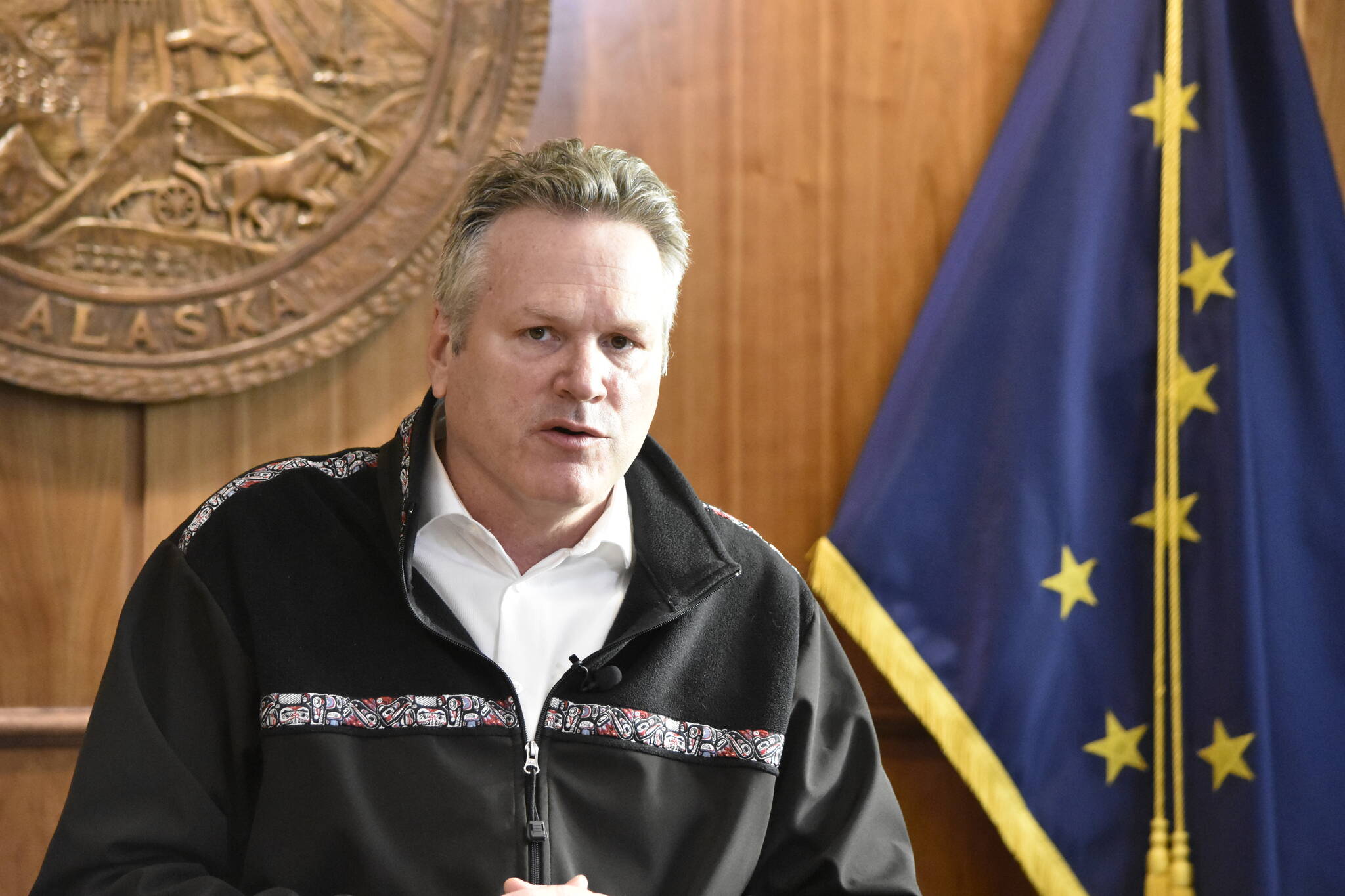By Gov. Mike Dunleavy
Politics is often viewed as a zero sum game in which one side wins at the expense of another, but the general obligation bond proposal introduced by my administration represents a win-win for Alaskans.
Known as GO bonds, this financing instrument for infrastructure projects must be approved first by the Legislature, and then by the voters in the general election.
I have always said that we must trust the people if we want them to trust us, and Alaskans will have their voices heard at the ballot box as required in our constitution for the issuance of GO bonds.
I trust Alaskans, and I am confident in the case we can make to the people about the benefits of this proposal to build a safer, stronger state.
As proposed, my administration’s GO bond proposal requires financing for about $325 million to cover more than a dozen projects including roads, ports, harbors, and airports.
A GO bond package approved by legislators and ultimately the voters is a means for Alaskans to control our own destiny.
The projects span the state from the Northwest to Southeast, and from the Interior to Southcentral.
On the Kenai Peninsula, we will fund the long-sought Kenai River Bluffs stabilization project as well as expansion and critical improvements to the Seward Harbor to accommodate growth in both freight and passenger traffic.
Together, these are both urgent projects given the loss of structures to bluff erosion already and the rapidly approaching time when the current Alaska Railroad dock in Seward will become unusable.
Alaskans have consistently shown their willingness to invest in capital projects through prudent financing going back to statehood, and that was at a time when we still had an income tax.
In total, Alaskans have approved GO bonds 16 times since 1960 to raise approximately $3 billion to build out infrastructure for our vast state that benefits our economy and our workforce.
A natural question is why finance these projects instead of paying for them outright? The answer is that in the current interest rate environment, our investment returns over the long-term are greater than the costs of paying down our debts.
Because of strong investment returns, our obligations to our state pension system are virtually erased and that lowers our budget costs over time.
Fixed costs of state government like retirement and debt service are on the decline while revenue outlooks are increasingly positive, the state is well positioned to afford a responsible level of new debt to address these needs and priorities.
As a result of this improved budget situation, I will not consider using general fund dollars to pay for projects that will cost less over the long-term to finance.
Another question is why take on debt when Congress is supposedly showering states with federal infrastructure money?
The answer to that is many projects that are a priority at the state or local level are not necessarily priorities at the federal level. Nor is the state in line to receive a pile of largely unrestricted funds as was the case with the COVID-19 relief bills.
While there are some competitive grants available in the recent infrastructure bill, many funding opportunities require state matches ranging from 10% to 35%.
I’ve heard the voices of those who see a contradiction in the receipt of federal funds compared to my criticism of the current administration. Some have suggested I should be thanking the Biden administration instead. One senator went so far as to say that I shouldn’t “bite the hand” that feeds Alaska.
To be clear, the Alaska I envision is one that feeds itself, not an Alaska that depends on the federal government to eat.
The credit for every benefit to Alaska within this infrastructure bill goes to the hard work of our Congressional delegation, and their dedicated representation of our interests is always appreciated.
As champions for our resource development opportunities, they know as well as I do that money from the federal government is no substitute for failing to fulfill its obligations spanning from the Statehood Act to the 2017 legislation that required lease sales to be held in the Arctic National Wildlife Refuge coastal plain.
So, for those who believe I should thank the Biden administration that has been attacking Alaska like no other state since day one, I can only say to prepare for disappointment.
Although we may be treated like one by this administration, Alaska is not a second-class state. We will utilize the same traditional infrastructure matching programs available to our 49 fellow states.
We will not apologize for it, nor will we give up our right to speak out against this administration, or to defend the rights of Alaskans when necessary, regardless of whether we receive federal funds.
To suggest we bite our tongues lest we bite the federal hand only underscores the danger of relying on federal funds to support our state.
My administration is digging into this 1,000-page bill to better understand exactly what it means to Alaska, and as more federal guidance is received explaining the rules for this spending, and the state matches needed, the bond package may change.
It can also change based on input from Alaskans and their legislators. This is not a take-it-or-leave-it piece of legislation.
My administration is willing and ready to work with legislators and listen to Alaskans in order to have the best proposal possible that can earn the support it needs from a majority of voters.
For a full list of projects, estimated costs, and potential federal matching, please visit omb.alaska.gov and select “Proposed Budget.” From there you can scroll down the page to the section about the FY2023 GO bond proposal for more details.
Mike Dunleavy is the 12th governor of Alaska.

